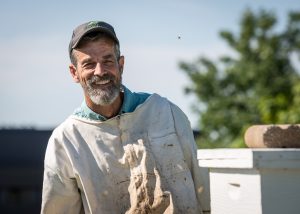by: CropLife International
Consumers rely on farmers to deliver everything from fruit to nuts, but farmers need the help of the honey bee to help pollinate these food crops around the world. In order to continue delivering consumers their watermelons and blueberries in the future, farmers and researchers are working together to look for new ways to ensure the well-being of honey bees.
The 11th annual national survey of honey bee colonies was recently released and reports of seasonal honey bee losses across the United States continue to be of great concern. The Varroa mite – a parasite that attaches to the body of a honey bee or honey bee larva, weakening the bee’s immune system and spreading viruses – is thought to be a leading contributor to honey bee losses. Finding safe and sustainable solutions to control these dangerous parasitic mites is critical and scientists at Monsanto are researching a product that aims to control Varroa mite infestations, improving bee health and colony survival.

The product is fed to honey bees in a sugar syrup that can dial down gene activity through a natural process called RNA interference, which can suppress the mite’s gene, but is harmless to honey bees. The appeal of this approach is the ability to target just the Varroa mite, while reducing the application of chemical pesticides in honey bee colonies. Controlling the Varroa mite, safely and sustainably, is the goal of all of us in modern agriculture.
Field trials with the product will be conducted in 2017 throughout beekeeping areas of North America. If successful, it may take the might out of the mite.
Jerry Hayes is Honey Bee Health Lead at Monsanto Company in St. Louis, Mo.
